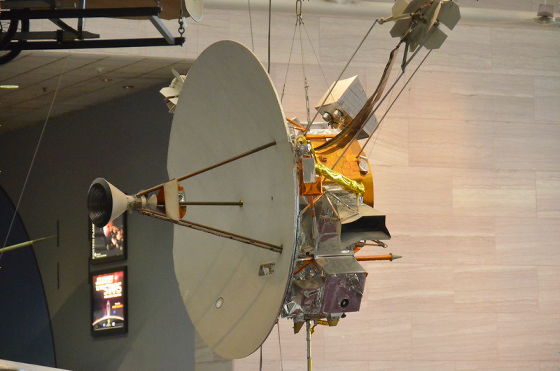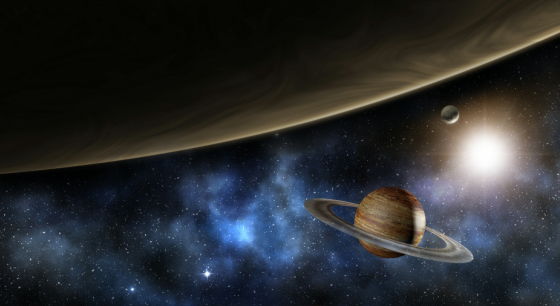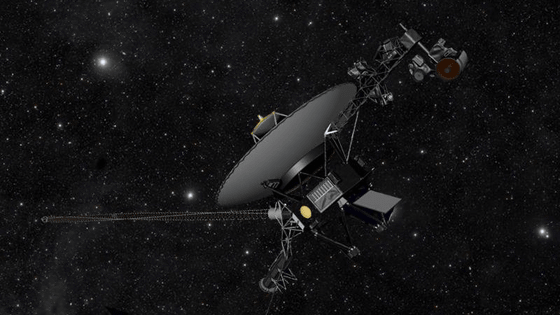NASA successfully revives Voyager 1's thrusters, which were thought to have broken down 20 years ago, from Earth, 25 billion km away

By
Voyager 1 was launched in 1977 as part of the Voyager program aimed at exploring planets outside the solar system and beyond, and is currently flying about 25 billion km from Earth at the time of writing. NASA has reported that it has succeeded in restoring the thrusters (propulsion system) of Voyager 1, which were thought to have broken in 2004.
NASA's Voyager 1 Revives Backup Thrusters Before Command Pause - NASA Science
https://science.nasa.gov/blogs/voyager/2025/05/14/nasas-voyager-1-revives-backup-thrusters-before-command-pause/

NASA resurrects Voyager 1 interstellar spacecraft's thrusters after 20 years: 'These thrusters were considered dead' | Space
https://www.space.com/space-exploration/missions/nasa-resurrects-voyager-1-interstellar-spacecrafts-thrusters-after-20-years-these-thrusters-were-considered-dead
Voyager 1 was launched 16 days after its sister spacecraft, Voyager 2 , and accomplished its main missions by observing Jupiter in 1979 and Saturn and its rings in 1980. It has since continued to fly into deep space at speeds of up to 56,000 km per hour, transmitting valuable scientific data about our solar system back to Earth.
However, both Voyager missions have been plagued by problems due to their age and distance from Earth. In 2024, a command to turn on Voyager 1's heaters accidentally triggered a fault protection system, causing a temporary loss of communications.
Communication with Voyager 1, more than 24 billion km away, was lost, but was restored by a sub-communication system that had not been used for 40 years - GIGAZINE

One of the most important pieces of equipment for the two Voyager probes is the thrusters that control the attitude of the probes. The Voyagers, flying in space far from Earth, must keep their antennas pointed toward Earth to maintain communication with the planet. The thrusters are used to slowly rotate the probe body and control the orientation of the antennas.
But in 2004, two of Voyager 1's internal heaters lost power and stopped functioning, which in turn disabled its primary roll thrusters. NASA engineers at the time determined that the broken heaters were unlikely to be repaired, and opted to switch to backup roll thrusters instead.
'The team was comfortable accepting that the primary roll thrusters would fail because they had a perfect backup,' said Kareem Badaruddin, Voyager project manager at NASA's Jet Propulsion Laboratory . 'Frankly, they probably didn't expect the Voyager spacecraft to last another 20 years.'
However, Voyager 1 has been operating for more than 20 years since its main roll thruster failed. Meanwhile, the backup roll thruster has been experiencing problems with fuel residue accumulating in the tubes. The residue accumulated in the tubes is adversely affecting the operation of the thruster, and there is a risk that it will stop working as early as the fall of 2025.

by
So NASA's engineering team decided to re-examine the 2004 thruster failure. They found that an unexpected disturbance in the circuitry that controlled the heater's power might have caused the switch to flip to the wrong position. If they could flip the switch back to its original position, the heater would work again, and the spacecraft might be able to switch back to the primary roll thruster if the backup roll thruster jammed.
To repair Voyager 1's thrusters, the dormant thrusters must be turned on, their heaters repaired, and then restarted. However, if the star tracker (attitude sensor) is too far off from its normal position when the thrusters are turned on, the thrusters may automatically fire as a safety measure. Therefore, the NASA team had to adjust Voyager 1's star tracker as accurately as possible before turning on the thrusters.
The Australian antenna that communicates with Voyager 1, DSS-43 , will be offline for upgrades from May 2025 to February 2026, with only brief periods online in August and December. NASA teams explained that they wanted to make repairs before the antenna went offline, and to have dormant thrusters available in August, when active thrusters may be jammed.
Then, on March 20, the NASA team watched from Earth as the signal sent from Earth reached Voyager 1 and executed the command. Because it takes more than 23 hours for the radio signal from Voyager 1 to reach Earth, all work had been completed by the time the NASA team was watching, and they were worried that 'Voyager 1 may be in a critical situation by now.' In the end, within 20 minutes of executing the command, the heater temperature began to rise dramatically, and the NASA team learned that Voyager 1's thruster repair mission was successful.
'This was a glorious moment. Morale on the team was very high that day,' said Todd Haber, mission manager at the Jet Propulsion Laboratory. 'The thruster was assumed to be dead, and that was the correct conclusion. But then one of our engineers had the insight that maybe there was something else that could have caused it, and that it might be fixable. This was a one-off miracle for Voyager 1.'

Related Posts:
in Science, Posted by log1h_ik






